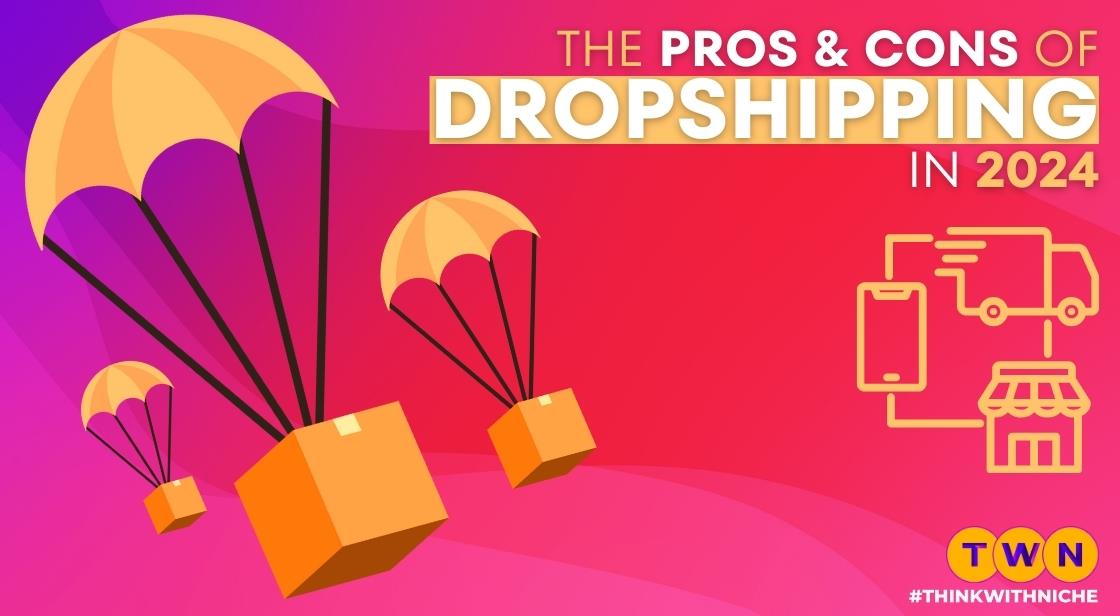The Pros and Cons of Dropshipping in 2024

Blog Post
Venturing into the digital retail sphere beckons entrepreneurs toward the innovative realm of dropshipping. A business model that's reshaping the traditional retail landscape, dropshipping offers enticing promises of minimal startup hurdles and potential for exponential growth.
However, beneath its veneer of ease lies a nuanced terrain of advantages and challenges that shape its trajectory in the market.
As the global market for dropshipping burgeons, the allure of this retail approach becomes increasingly apparent. Its streamlined management, low initial investment, and adaptable work hours entice aspiring entrepreneurs into the digital marketplace.
Yet, the path to success in dropshipping isn't devoid of hurdles. Competition, dwindling profit margins, and limited control over brand elements present significant challenges.
This exploration aims to dissect the multifaceted world of dropshipping, offering insights into its promises and perils, guiding aspiring digital merchants through the complexities of this evolving e-commerce landscape.
Dropshipping is a type of retail business where the store partners with suppliers who take care of shipping and packaging. The store operator does not keep an inventory of items. When someone gives the store an order, it sends the details to a supplier, who then ships the goods to the end user.
Why dropshipping?
The dropshipping market registered growth of just under 24% globally between 2020 and 2021 alone, from $128.60 billion to $159.08 billion. According to data from Statista, it's expected to reach $476.10 within three years.
The Pros and Cons of Dropshipping in 2024
Pros of dropshipping
Dropshipping is relatively easy to manage, requires less startup capital, comes with low overheads and flexible work hours, and is relatively easy to grow as a business. Here's a detailed look into each advantage.
Easy and flexible management
When the business sets out to fulfill an order, it doesn't have to buy products. It just forwards the order to the vendor or supplier and pays. Your business doesn't deal with renting and managing a warehouse, maintaining physical inventory, packaging products and shipping them, handling inbound shipments, or replenishing stock and ordering goods.
All you need to run a dropshipping business is a laptop or a smartphone with a reliable internet connection. You set the retail price, add new products whenever you want, modify your strategy, and approach new suppliers as needed.
Less startup funding
The investment to launch an ecommerce store and start dropshipping is minimal as you don't pay for shipping, packaging, or storage. All you need to get started is an ecommerce platform and a domain. After creating a website to sell products, expanding your business becomes easy.
You can simply list new products on it without worrying about a higher workload as the supplier takes it from there. Popular ecommerce platforms include Shopify, WooCommerce, Square, BigCommerce, and Adobe Commerce.
Flexible work hours
Not only can you work from anywhere as a dropshipper, but also at any time. It's perfectly compatible with a day job.
Cons of Dropshipping
Among the downsides of dropshipping can be low profit, high competition, and little control over suppliers' actions, which itself results in a series of disadvantages. The supplier gets a big cut of your profit. The profit margin could be low enough to prevent you from paying for website maintenance, managing orders, and marketing or advertising products.
To keep the business running, you can offer discounts, reach out to potential customers, and address existing customers' complaints as soon as possible.
Severe competition
Considering the simplicity of launching a dropshipping company and the low overhead costs, it's no surprise that the niche is very competitive. There is a substantial risk of losing orders to platforms with lower prices. You won't necessarily have an exclusivity agreement with your suppliers, which means someone else can offer the same products at better prices.
No control over suppliers and orders
Dropshipping is different from an ordinary ecommerce business, where you maintain a product inventory. If a customer complains about late delivery or the quality of an item, you can look into the issue immediately. With dropshipping, you can only convey the complaint to the supplier and hope they do something.
Among other issues, this can result in poor communication. You are the middleman between the supplier and the end user. A late response from either party will slow the whole communication process down.
You don't have control over the order fulfillment process either, as the supplier handles it. You bear the brunt of the customer's anger if something goes wrong with an order due to supplier problems. Repeatedly dealing with angry customers whose issues you can do nothing about can get quite frustrating.
Building a brand is challenging
Finally, you have little control over branding and product design when you are running a dropshipping business. This means customizing products is challenging.
Bottom line: Should you start a dropshipping business?
If you want to launch a business with low overhead costs and limited starting capital and have unique products that you don't need to manufacture, dropshipping can be perfect. To succeed in this business, you only need reliable suppliers with timely services.
If you want to start making a profit from the beginning, dropshipping could disappoint you. An exception is if you have a strong brand reputation or deal in exclusive products.
The dropshipping niche is extremely competitive. Your prices must be equally competitive to keep existing customers and gain new ones, which cuts into your profit.
As banal as it sounds, a niche with high demand and low competition will yield profit immediately. Examples are organic food, eco-friendly products, home office equipment, and pet care products.
You May Like
EDITOR’S CHOICE












